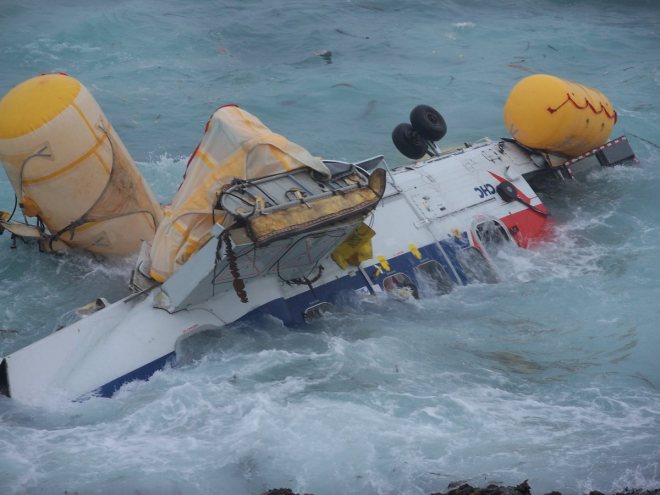Fatal crash report criticises pilots

The actions of the pilots involved in the fatal helicopter crash off Sumburgh in 2013 have been criticised in an air accident report.
Findings by the Air Accident Investigation Branch have shown flight instruments were not adequately monitored for up to 30 seconds as the Super Puma L2 made its approach to land.
They also showed the crew did not take account of deteriorating weather, which could have meant Scatsta airport was a more suitable destination for the aircraft to head for.
The report concludes: “The flight crew had obtained a meteorological forecast for Sumburgh which indicated that the weather conditions would be better than they actually were.
“Whilst en route to Sumburgh the crew received up to date meteorological reports which indicated that conditions had deteriorated.
“The flight crew did not obtain up to date weather reports for alternate airports during the final flight sector and did not have a well rehearsed plan for a diversion.
“The weather conditions at Scatsta, the nominated alternate airport, would probably have precluded making a successful approach, but the flight crew were not aware of this.”
The report adds that, in the latter stages of the approach, there was a period of around half a minute when the flight instruments were not properly checked, and the helicopter’s airspeed continued to drop, unchecked, below 80 kt.
“The helicopter’s flight instruments were not monitored effectively during the latter stages of the non-precision instrument approach.
“This allowed the helicopter to enter a critically low energy state, from which recovery was not possible.”
Four out of the 18 people onboard were killed when the aircraft crashed on its approach to Sumburgh on 23rd August.
Duncan Munro, 46, from Bishop Auckland, Sarah Darnley, 45, from Elgin, Gary McRossan, 59, from Inverness and George Allison, 57, from Winchester all died following the crash at Garths Ness, around two miles west of Sumburgh Airport.
The aircraft filled with water and rolled over. Onboard flotation bags were deployed which kept the helicopter afloat.
The incident sparked a major rescue operation. Conclusions within the report highlight a “significant delay” to the launch of the airport’s Fast Rescue Craft because of the tide state and location of the slipway close by to the airport.
But it adds this did not affect the outcome of the rescue. Moves were subsequently made to improve the slipway.
Isles MSP Tavish Scott highlighted the need to meet the report’s proposals to avoid further incidents.
“Helicopter operators and all other parties must ensure that the recommendations of today’s reports are complied with, in particular in providing training on instrument scan techniques for pilots,” he said in a statement.
“This was a very serious incident involving the tragic loss of four lives. Everyone flying to and from Shetland, as well as the rest of Scotland, must have complete confidence in the airworthiness of all aircraft and in the training regimes followed by pilots.”
• For full story, see this week’s Shetland Times.








NO COMMENTS
Add Your Comment